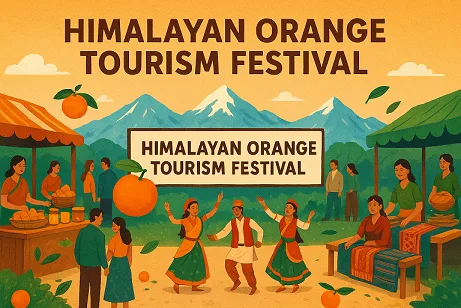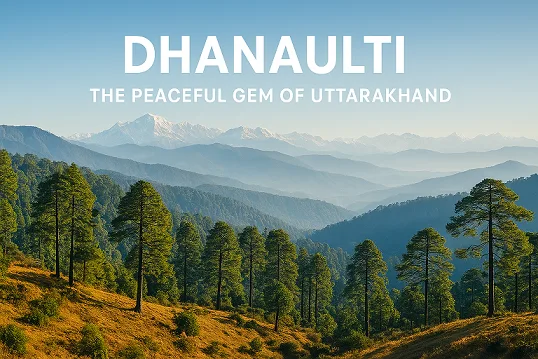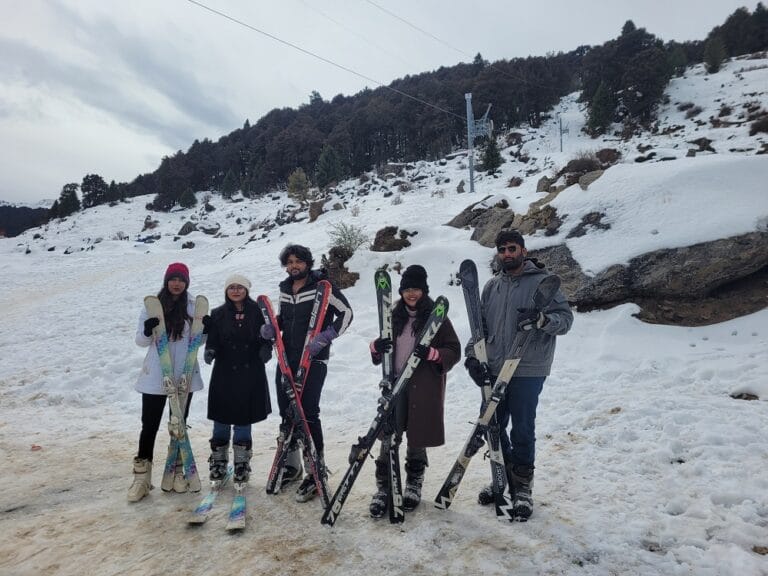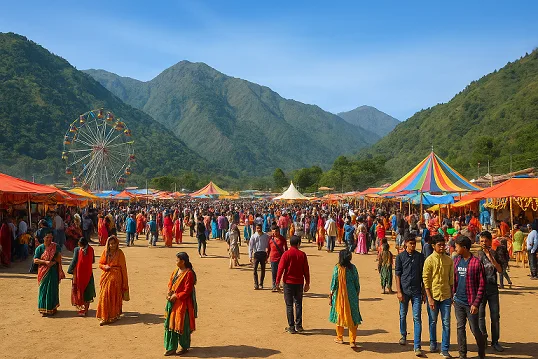By – Mohit Bangari
Bhyundar Village – Gateway to Valley of Flowers

Mohit Bangari
Explore Himalaya With Me!!
Facebook
Email
WhatsApp
Twitter
LinkedIn
Tumblr
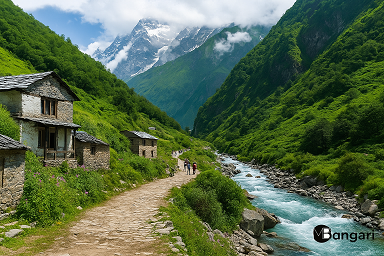
If you are planning to visit the Valley of Flowers or Hemkund Sahib, you will definitely pass through Bhyundar village. This small but beautiful village in Chamoli district of Uttarakhand is not just a random point on the trek route. It is the natural doorway to one of the most stunning valleys in the world.
Located about 9 km uphill from Govindghat, Bhyundar village is surrounded by alpine forests, crystal-clear rivers, and snow-covered mountains in the distance. Most trekkers stop here for tea, snacks, or rest before continuing to Ghangaria. But if you look deeper, you’ll find a place full of culture, stories, and Himalayan hospitality.
Table of Contents
Location & Altitude
Bhyundar village is situated on the banks of the Lakshman Ganga River at an altitude of about 2,000 metres (6,500 feet). It lies on the famous trekking route that connects Govindghat with Ghangaria. From here:
Ghangaria is about 4 km ahead.
Valley of Flowers is 3 km from Ghangaria gate.
Hemkund Sahib is 6 km uphill from Ghangaria.
The whole region comes under the Nanda Devi Biosphere Reserve, which makes it rich in rare plants, wildflowers, and wildlife.
Demographics & People
Bhyundar village is home to a small population—mostly Bhotiya and Garhwali communities. These are mountain people known for their resilience, warmth, and traditional skills.
Population – Less than 150 permanent residents.
Occupation – Agriculture (potatoes, rajma, barley), animal husbandry, and tourism-related services.
Languages Spoken – Garhwali, Hindi, and a bit of English for tourists.
Seasonal Migration – In winter, the village is abandoned due to heavy snowfall. Locals move to lower villages like Joshimath or Govindghat.
History & Cultural Importance
The name Bhyundar comes from the Bhyundar Valley, a lush stretch that leads to the Valley of Flowers. For centuries, locals used this route to graze their cattle and trade with nearby valleys.
The Valley of Flowers gained world attention in 1931 when British mountaineer Frank Smythe stumbled upon it while returning from a Nanda Devi expedition. Bhyundar became the main access point for explorers and pilgrims alike.
What to Do in Bhyundar Village
Although most people use Bhyundar as a short rest point, you can easily spend an hour or more here enjoying simple mountain pleasures.
Enjoy Tea by Lakshman Ganga
Sit at a local dhaba, sip a hot cup of tea or lemon ginger tea, and listen to the river’s sound.Talk to the Locals
The villagers are friendly and often share interesting stories about the Valley of Flowers, Hemkund Sahib, and life in the Himalayas.Photography
Capture the traditional Garhwali houses with slate roofs, terraced fields, and mountain views. Early mornings and late afternoons have the best light.Buy Local Products
Some villagers sell rajma, woollen caps, and handmade scarves. These make good souvenirs.Birdwatching
If you are into nature, keep your eyes open for Himalayan monal, finches, and snow pigeons in the surrounding forests.Mini Nature Walks
Take a short stroll around the village to see terraced farms and wildflowers.
How to Reach Bhyundar Village
Step 1 – Reach Govindghat
By Road: Govindghat is on the Rishikesh–Badrinath highway (NH 7). Regular buses and shared taxis run from Rishikesh, Haridwar, and Dehradun.
By Air: The nearest airport is Jolly Grant Airport, Dehradun (about 270 km from Govindghat).
By Train: The nearest railway station is Rishikesh (about 260 km).
Step 2 – Trek to Bhyundar
From Govindghat, start trekking towards Ghangaria. The trek is 13 km in total, but Bhyundar comes after about 9 km.
You can also hire a mule or porter if needed.
The route follows the Lakshman Ganga River with gradual climbs and a few steep sections.
Trek Route via Bhyundar Village
Govindghat to Bhyundar – 9 km trek with scenic forest views, small waterfalls, and rest points.
Bhyundar to Ghangaria – 4 km ahead, steeper climb.
From Ghangaria, go to:
Valley of Flowers – 3 km from the entry gate.
Hemkund Sahib – 6 km steep trek.
Flora & Fauna Around Bhyundar
Being part of the Nanda Devi Biosphere Reserve, the surroundings of Bhyundar are rich in Himalayan biodiversity.
Plants – Rhododendrons, Himalayan blue poppy, wild roses, and medicinal herbs like kutki and atis.
Birds – Himalayan monal, snow pigeons, finches, and thrushes.
Animals (Rare sightings) – Himalayan tahr, musk deer, and brown bear in far-off regions.
Best Time to Visit
The best months are June to early October.
June–July – Fresh greenery and early blooming flowers.
August – Peak flowering season in the Valley of Flowers.
September – Clear skies, less crowd, and post-monsoon freshness.
Winters are inaccessible due to heavy snow.
Tips for Visitors
Start your trek early from Govindghat so you can enjoy Bhyundar without rushing.
Carry light rain gear during monsoon.
Wear proper trekking shoes.
Keep the environment clean – avoid plastic waste.
Keep cash, as there are no ATMs beyond Govindghat.
Conclusion
Bhyundar village is not just a stop on your way to Valley of Flowers or Hemkund Sahib—it is a part of the Himalayan experience. Its traditional charm, friendly locals, and scenic beauty make it worth slowing down for.
When you sit by the Lakshman Ganga, sipping tea and watching the mountains, you will realise that this small Himalayan village is a treasure in itself. And when you continue towards Ghangaria, you’ll carry a piece of Bhyundar’s warmth with you on your journey.
Also Read
You can also explore more on Himalayan treks like Darma Valley, Adi Kailash, and others on my website mohitbangari.com, where I share full guides, routes, permit tips and cultural info.
Do you know about Maa Nanda Devi Raj Jat Yatra 2026? You can read a detailed article on this topic here.
Facebook
Email
WhatsApp
Twitter
LinkedIn
Tumblr
Related Post
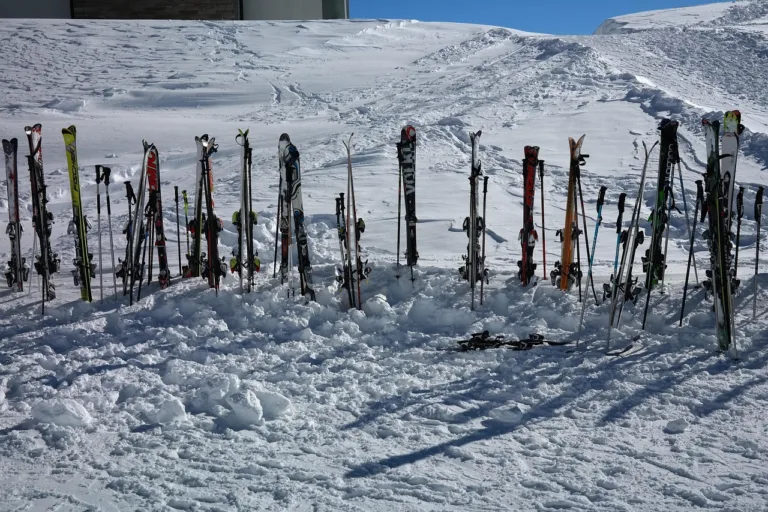
Adventure
Mohit Bangari
30 November 2025

Mohit Bangari
Explore Himalaya With Me!!
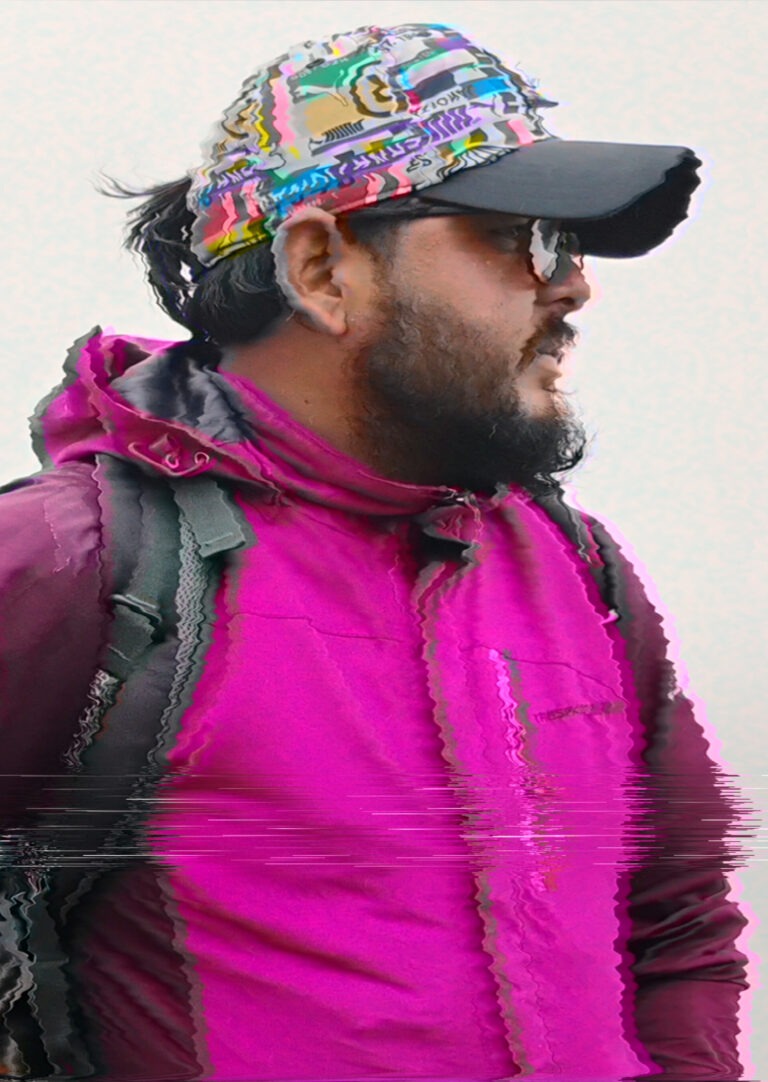

Explore the beauty and cultures of the Himalayas, from Jammu and Kashmir to Arunachal Pradesh, Tibet and Nepal. My blog shares stories, pictures, and fun articles about this amazing region. Come along on a journey where each mountain has a tale and every valley hides a treasure. Join me as I discover the magic of the mountains together.
Welcome to my Himalayan Adventure!

